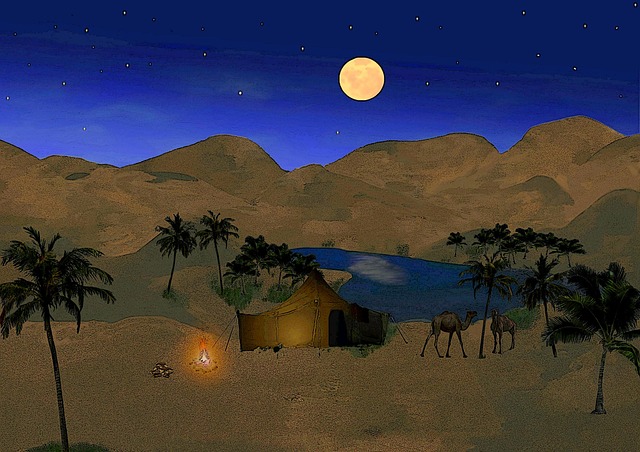THIS IS THE SECOND IN A SERIES ON THE CHERUBIM
If cherubim are men, how does this comport with the vision in chapters 1 of Ezekiel? The prophet saw four living creatures (identified as cherubim in chapter 10). They had the appearance and face of a man, and each had three additional faces. To the right was the face of a lion. To the left was the face of an ox. The fourth face was that of an eagle. Each cherub was paired with a wheel and within the wheel was a second wheel. This has led to fanciful conjectures that Ezekiel saw flying saucers in the sky. There’s a more prosaic explanation found in Numbers, chapters 2 and 3.
Following the exodus from Egypt, the armies of Israel marched in tribal units of three. (Though Levi was excluded, there were four such triads, since the half tribes of Ephraim and Manasseh represented Joseph). The Israelites also camped under the standard of the four division leaders-Reuben, Judah, Ephraim, and Dan. According to Jewish tradition, Reuben’s banner bore the emblem of a man. He camped south of the tabernacle. Judah’s sign was a lion. His position was to Reuben’s right, east of the tabernacle. Ephraim’s sign was an ox. His division was to the left (west). Dan was to the north. His standard bore the image of an eagle. The placement of the standards matches the orientation of the faces in Ezekiel’s vision. It links the living creatures to Israel, excepting Levi. The wheel within a wheel makes up for this omission.
The outer wheel represents the four triads encamped around the tabernacle. The tribe of Levi, however, was not numbered in the army. They served as priests and servants in the ministry of the tabernacle. Its consecrated clans formed an inner, protective circle “that there be no wrath upon the congregation of the children of Israel” (Num 1:53). The Aaronic priests camped east in front of the tabernacle and the Gershonite clans were behind it on the west. The Kohathites guarded the south side, and the Merarites were on the north. This is the wheel within the wheel.
Ezekiel observed that the wheels and the creatures were as one “…for the spirit of the living creature was in the wheels” (Ezek 1:21). Wheels and cherubim were covered with eyes, further evidence that they portrayed a multitude of people. He heard the sound of the living creatures’ wings and likened it to the noise of an encampment (machaneh, a camp, an army).
The cherubim he saw were not the two-winged variety. They had four wings. There’s a geographic aspect with this and it’s found in Ezekiel 7:2: “Also, thou son of man, thus saith the Lord GOD unto the land of Israel; An end, the end is come upon the four corners of the land.” Each creature stretched out its extra pair of wings on both sides to touch the wing of its neighbor and define a “corner of the land”. The vision forebodes a calamity that affects not just a few exiles in Babylon, of whom Ezekiel was one, but the entire nation.
In chapter 10, Ezekiel beholds the cherubim again. The vision is an expression of God’s judgment upon Israel for its great apostasy and the desecration of his temple. It is also an expression of his love and faithfulness. Fire would purge the nation in terrible judgments-death, exile, the destruction of Jerusalem and the temple. Yet, there’s hope. In Ezek 10: 18-19, the glory of the Lord departs the temple’s threshold, and stands above the cherubim. He would accompany the nation into exile. Moreover, he would see its return, as prophesized in the beautiful passage of Ezekiel 11:15-20.
